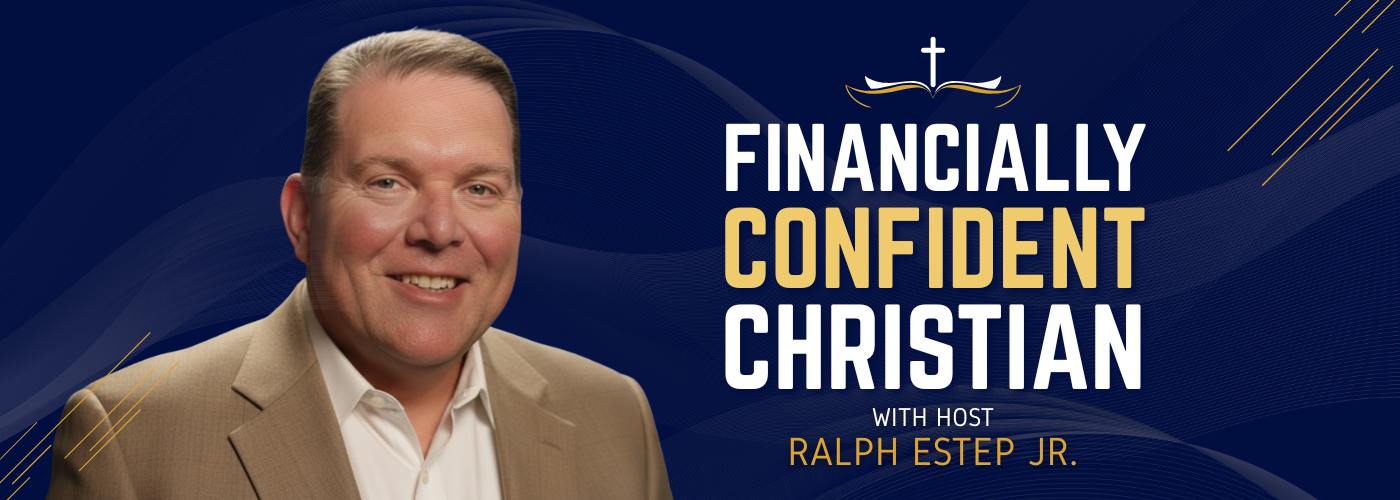Why Automating Your Savings Actually Works

Want to Save Consistently? Why Not Automate It?
Hey everyone, Ralph here from the Ask Ralph - Christian Finance show. Let's talk about something many of us wrestle with: saving money. We know it's important, we want to do it, but somehow, life happens. Paycheck comes in, bills go out, maybe a little extra spending here and there, and suddenly, there's not much left to put aside. If that sounds familiar, it’s time to take the pressure off and make saving effortless. Here’s why automating your savings actually works.
Saving consistently can feel like a real struggle, a big undertaking that sometimes requires retraining our brains.1 It's easy to get discouraged. But what if I told you there's a simple, powerful tool that can make saving much, much easier? What if you could put your savings plan on autopilot?
That's exactly what automating your savings does. It’s like giving your good intentions a helpful nudge, ensuring that saving happens regularly without you having to think about it every single time. And importantly, this isn't just some clever financial trick; it aligns perfectly with our call as Christians to be wise stewards. The Bible reminds us that everything belongs to God (Psalm 24:1, Haggai 2:8) 2, and we are called to faithfully manage the resources He entrusts to us (1 Corinthians 4:2).2 Automating our savings is a practical way to exercise that discipline and plan responsibly. It bridges the gap between wanting to save and actually doing it consistently, addressing a common hurdle many face in managing their finances faithfully.
Saving as Good Stewardship: The Biblical Foundation
Sometimes, Christians wonder if focusing on saving money conflicts with trusting God's provision. But the Bible actually encourages planning and saving as acts of wisdom and responsibility. Think about the ant, praised for gathering its food in the summer to prepare for the winter (Proverbs 6:6-8).2 Proverbs 21:20 puts it plainly: "Precious treasure and oil are in a wise man's dwelling, but a foolish man devours it" (ESV). The Living Bible translation is even more direct: "A wise man saves for the future, but a foolish man spends whatever he gets".3
Saving isn't about hoarding wealth for its own sake or lacking faith. It's about responsible stewardship. It’s about planning, like the man considering building a tower who first sits down to count the cost (Luke 14:28-30).2 Consistent saving allows us to:
- Prepare for the unexpected: Building an emergency fund reflects the wisdom of the ant, ensuring we can handle financial shocks without resorting to debt.2
- Provide for our families: Taking care of our loved ones is a fundamental responsibility.
- Reach future goals: Whether it's education, a home, or retirement, saving enables us to work towards these milestones.
- Be positioned for generosity: Ultimately, managing God's resources well allows us to be more generous. When our own house is in order, we are better equipped to bless others and support God's work (Acts 20:35, 1 Timothy 6:17-19).2
So, saving isn't unspiritual; it's a practical discipline that honors God and enables us to live responsibly and give generously. Even starting small is encouraged as a discipline to develop.2
Why We Struggle: The Human Side of Saving (or Not Saving)
If saving is so wise and beneficial, why is it often so hard? It turns out, our own human nature can sometimes work against our best intentions. Behavioral science helps us understand some common hurdles:
- Present Bias: We tend to value immediate rewards more highly than future benefits.4 Spending $50 on dinner tonight feels more tangible and appealing than saving that same $50 for retirement decades away. Saving requires sacrificing now for something later.
- Inertia (Status Quo Bias): It takes effort to change our habits. If we're not currently saving, starting requires overcoming inertia – the tendency to just keep doing what we've been doing.4 Making that first step, and then repeating it, takes energy.
- Decision Fatigue & Analysis Paralysis: Thinking about when to save, how much to save, and where to put it every single payday can be mentally draining. Sometimes, faced with too many choices or the perceived effort, we just put it off, falling into "analysis paralysis".6 Those "I'll do it later" moments often mean it doesn't happen at all.7
- Temptation: When money sits in our checking account, easily accessible, the temptation to spend it on other things is always there. Manually moving money to savings can feel like a small "pain point" when you see other ways you could use it immediately.6
Recognizing these tendencies isn't about assigning blame or feeling guilty. These are common human psychological patterns. The good news is that automation is a strategy specifically designed to work with our psychology, bypassing many of these hurdles. It’s not a crutch; it’s a smart system that uses our own tendencies to our advantage.
The Power of "Set It and Forget It": How Automation Transforms Saving
This is where automating your savings truly shines. By setting up automatic transfers, you fundamentally change the saving process from something requiring constant effort and willpower to something that happens reliably in the background. Here’s how it helps:
- Builds Consistency: This is perhaps the biggest win. Automation ensures you save regularly, like clockwork, without fail. You'll never forget or get too busy.1 That consistent, brick-by-brick approach is how substantial savings are built over time.1
- Fosters Discipline & Habits: Saving becomes an integral, effortless part of your financial routine.6 Automation helps build the habit of saving without relying on finite willpower.5 It turns saving from an occasional act into a consistent discipline.
- Saves Time & Mental Energy: No more remembering to log in and make transfers. You set it up once, and the system takes over, freeing up your time and mental bandwidth.4
- Reduces Temptation: Moving money automatically, ideally before you even see it hit your main spending account, follows the "out of sight, out of mind" principle. This lessens the temptation to spend it impulsively and relieves the mental burden of choosing saving over spending.6
- Makes Budgeting Easier ("Pay Yourself First"): Automation puts the crucial "pay yourself first" principle into action.6 By setting aside savings automatically, you naturally adjust your spending to live on the remaining amount.1 You train yourself to live below your means, a cornerstone of financial health.
- Leverages Psychology: Automation directly counters those behavioral hurdles. It overcomes inertia by making saving the default – it happens unless you actively stop it.4 It sidesteps present bias by removing the recurring decision point where immediate gratification competes with future goals.6 Research confirms this approach works, leading to higher participation in savings plans, increased contribution rates, and greater overall savings.4 It changes the decision-making process from an active "opt-in" each time to a passive "opt-out" system, making saving the path of least resistance.
Making It Happen: Simple Ways to Put Your Savings on Autopilot
Ready to harness the power of automation? It's simpler than you might think. Here are the most effective ways to get started:
- Split Your Direct Deposit: Ask your employer's HR or payroll department if you can have your paycheck deposited into multiple accounts. You can specify a fixed dollar amount or a percentage (say, 10%) to go directly into your savings account each payday, with the remainder going into your checking account.9 This is incredibly powerful because the money is saved before it even lands in your primary spending account.9
- Set Up Automatic Recurring Transfers: If splitting your direct deposit isn't feasible (maybe you're self-employed or your employer doesn't offer it), use your bank or credit union's online banking platform. You can easily schedule automatic transfers from your checking account to your savings account on a regular basis – say, monthly or bi-weekly, ideally right after you get paid.9
- Automate Retirement Contributions: Don't forget about long-term savings! Contributing to your employer's 401(k) or similar retirement plan via payroll deduction is a fantastic form of automation.9 If your employer offers a match, contribute at least enough to get the full match – it's free money! You can also set up automatic transfers from your bank account to an Individual Retirement Account (IRA).6 This leverages tax advantages and the power of compound growth over the long haul.1
Here’s a quick comparison of these main methods:
|
Method |
How It Works |
Key Benefit |
Good For... |
|
Split Direct Deposit |
Employer sends % or $ amount directly to savings |
Saves money before you can easily spend it |
Employees with accommodating employers |
|
Automatic Transfers |
Bank moves set amount from checking to savings regularly |
Flexible, controllable via online banking |
Everyone, especially self-employed |
|
401(k)/IRA Automation |
Payroll deduction (401k) or auto-transfer (IRA) |
Often pre-tax, leverages employer match |
Long-term retirement saving |
Source: Based on information from 6
Some banks and apps also offer "round-up" features, where your debit card purchases are rounded up to the nearest dollar, and the difference is automatically transferred to savings.1 While these can be nice supplemental tools, focus on the core methods above for the biggest impact.
Tips for Success: Making Automation Work for the Long Haul
Automating savings is powerful, but it's not entirely "set it and forget it forever." To truly maximize its benefits and ensure it stays aligned with your goals and stewardship responsibilities, keep these tips in mind:
- Start with a Plan (Budget!): Automation works best when it's informed. Before setting up transfers, understand your income and expenses. Create a simple budget to determine a realistic amount you can save consistently.7 Automation without a plan could lead to overdrafts or saving too little.
- Start Small, Then Grow: Don't feel pressured to automate a huge percentage of your income right away, especially if you're just starting. Begin with an amount that feels comfortable, even if it's just $20 per week.11 The key is to build the habit. Once you're comfortable, gradually increase the amount.6 That small increase of 1% or 2% might not feel like much in your daily spending, but it adds up significantly over time.6
- Boost Savings with Income Increases: This is crucial! When you get a pay raise, bonus, or tax refund, resist the urge to immediately increase your spending. Instead, allocate a good portion (maybe half?) of that new income directly towards increasing your automated savings.6 If you were managing okay before the raise, directing the extra towards savings before you get used to spending it is a powerful way to accelerate your progress.6
- Use Separate Accounts for Goals: Consider opening dedicated savings accounts for specific goals – like an emergency fund, a down payment fund, or a vacation fund. Automate transfers into each.10 Giving these accounts specific names (e.g., "Future Home Fund") can actually boost your motivation by making the goals feel more concrete.7 This leverages a psychological principle called "mental accounting" in a positive way, helping you mentally earmark funds for their intended purpose.5
- Check-in Regularly (Avoid Complacency!): While automation handles the doing, you still need to handle the directing. Review your budget and your automated savings plan periodically – maybe quarterly or at least once a year.6 Does the amount still make sense? Are you on track for your goals? Is there room to increase contributions? Don't let the ease of automation lull you into complacency.8 Remember, some automated plans (like basic 401k enrollment) might start with a low default contribution rate; it's up to you to review and increase it to meet your actual needs.4
- Adjust for Life Changes: Major life events – a new job, marriage, welcoming a child, a significant income change – will likely impact your finances and goals. When these happen, make it a point to reassess your savings plan and adjust your automated contributions accordingly.6 Effective automation is dynamic, adapting to your life journey.
Think of automation as a powerful tool in your stewardship toolbox. The "forgetting" part applies to the task of moving money each payday, not the overall strategy and your responsibility to manage it wisely. Regular check-ins ensure this tool continues to serve your goals effectively.
Automation: A Tool for Faithful Financial Management
Using practical tools like automated savings isn't just smart money management; it's a way to live out our calling as faithful stewards. The discipline that automation helps instill aligns perfectly with the biblical encouragement towards diligence and hard work (Proverbs 10:4, Proverbs 14:23) 3 and wise planning (Luke 14:28-30).2
By consistently setting aside resources, we are better prepared to handle life's uncertainties (Proverbs 6:6-8) 2, provide for our families, and work towards long-term goals. And importantly, financial stability achieved through disciplined saving positions us for greater generosity, allowing us to more freely share God's blessings with others (Acts 20:35, 1 Timothy 6:17-19).2
Consider the Parable of the Talents (Matthew 25:14-30).2 The master commended the servants who actively used and grew the resources entrusted to them. Automating savings is a proactive step – it's doing something with what God has provided, aiming for responsible management and growth, rather than passively neglecting it. It’s a practical way to put stewardship principles into action day after day, week after week.
Conclusion: Take the First Step Today!
So, if you've been struggling to save consistently, remember that you're not alone, and there's a highly effective solution within reach. Automating your savings makes consistency achievable by removing the friction, bypassing common psychological hurdles, and building discipline almost effortlessly. It’s a simple yet profound way to practice wise stewardship, prepare for the future, and align your finances with your faith values.
Don't let inertia hold you back any longer.4 The most important step is the first one. What one small action can you take this week to start automating your savings?
- Could you log into your online banking right now and set up a recurring transfer of just $25 to your savings account each payday?
- Could you email your HR department today to ask about splitting your direct deposit?
- Could you set a reminder for tomorrow to review your 401(k) contribution and see if you can increase it by 1%?
Choose one thing. Start small if you need to.11 The key is to begin. Taking that first step puts you on the path toward greater financial peace and more faithful stewardship, trusting God's provision while actively managing the resources He has given you.2 You can do this!
Works cited
- What Is Automatic Savings and Is It a Good Idea for You? - CNET, accessed May 12, 2025, https://www.cnet.com/personal-finance/banking/advice/what-is-automatic-savings-and-is-it-a-good-idea-for-you/
- Biblical Financial Stewardship - Amazon S3, accessed May 12, 2025, https://s3.amazonaws.com/media.cloversites.com/9b/9b416a9c-2132-45cc-ab06-2e4979c5b192/documents/Biblical_Financial_Stewardship-Draft_4.pdf
- Bible Verses About Money and Stewardship - Envoy Financial, accessed May 12, 2025, https://www.envoyfinancial.com/bible-verses-about-money-and-stewardship/
- wharton.upenn.edu, accessed May 12, 2025, https://pensionresearchcouncil.wharton.upenn.edu/wp-content/uploads/2024/04/Chin-et-al.-Conference-Paper.pdf
- The Role Of Psychology In Savings Behavior - FasterCapital, accessed May 12, 2025, https://fastercapital.com/topics/the-role-of-psychology-in-savings-behavior.html
- Automatic Savings: Benefits & Strategies to Consider | PNC Insights, accessed May 12, 2025, https://www.pnc.com/insights/personal-finance/invest/automatic-savings-plan-tips.html
- Unleash Your Savings Potential: Automatic Savings Plans - Synchrony Bank, accessed May 12, 2025, https://www.synchrony.com/blog/banking/how-automatic-savings-can-help
- What Is Automatic Savings and Is It a Good Idea for You? - CNET, accessed May 12, 2025, https://www.cnet.com/personal-finance/banking/what-is-automatic-savings-and-is-it-a-good-idea-for-you/
- Tips to Make Savings Automatic - PFCU, accessed May 12, 2025, https://www.pfcu4me.com/News/Tips-to-Make-Savings-Automatic
- How to Automate Your Savings with Regular Transfers, accessed May 12, 2025, https://resources.additionfi.com/how-to-automate-your-savings
- 15 Essential Budgeting Tips and Tricks for Beginners to Save Money - Hacks Lifestyle, accessed May 12, 2025, https://hackslifestyle.com/money-saving-hacks/budgeting-tips-for-beginners/
- Mental Accounting - Bias - The Decision Lab, accessed May 12, 2025, https://thedecisionlab.com/biases/mental-accounting












